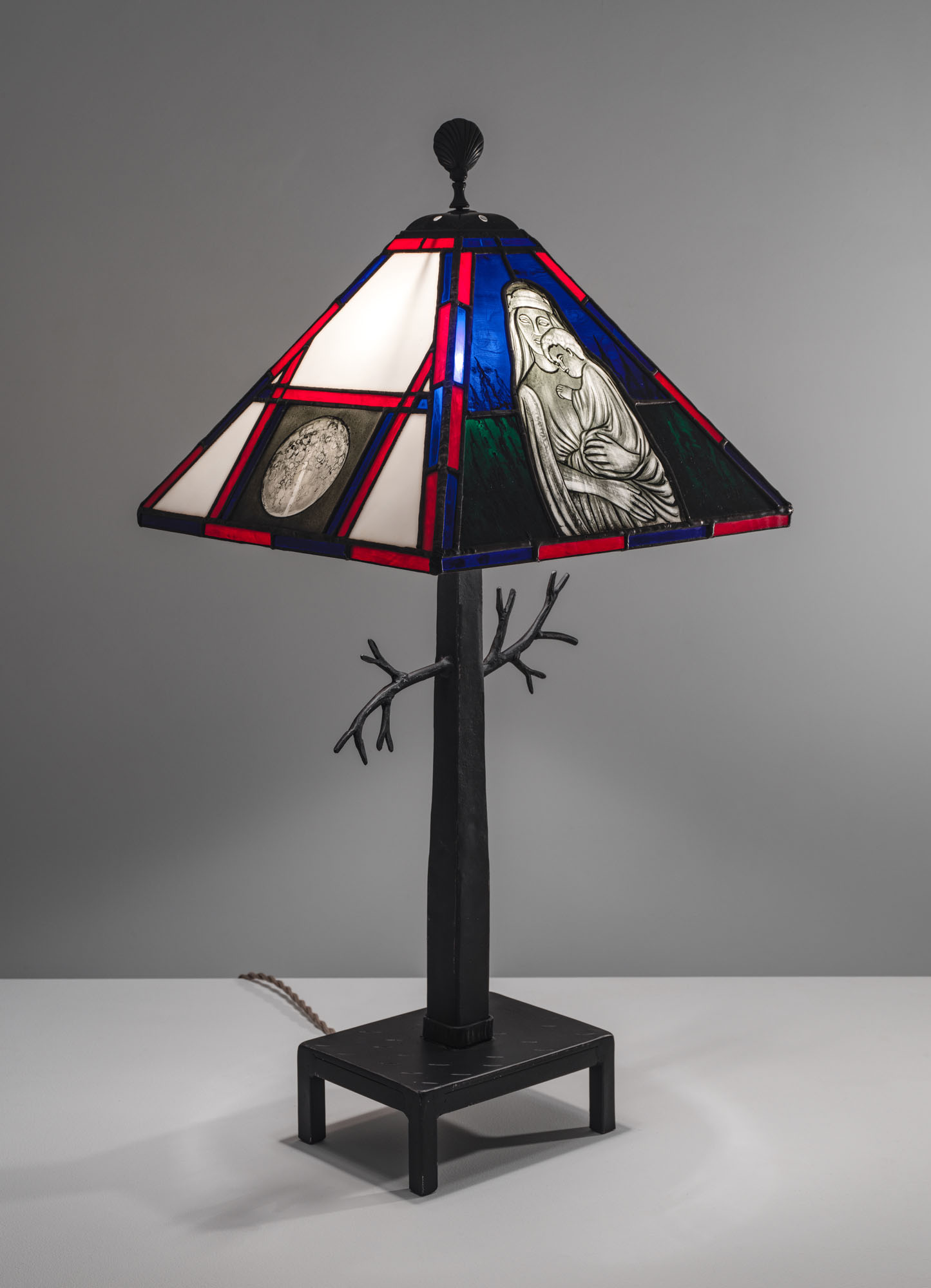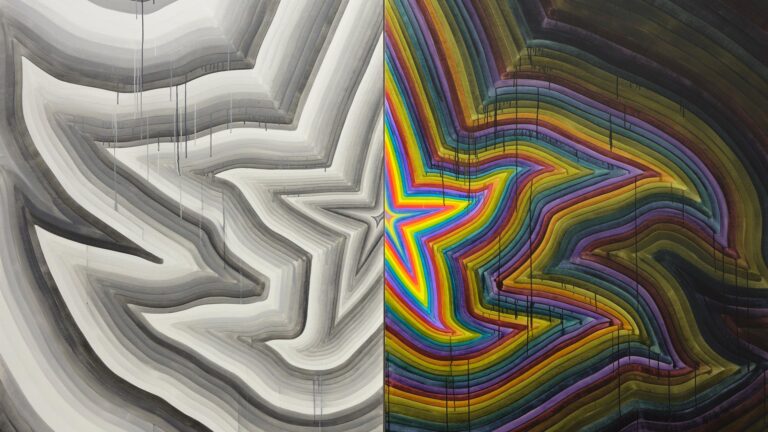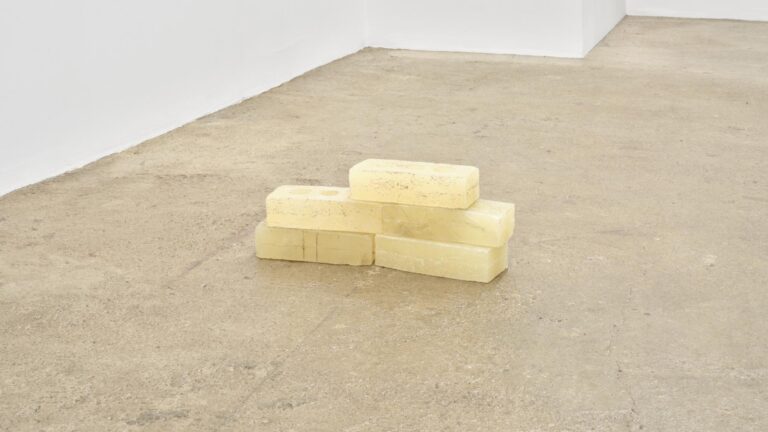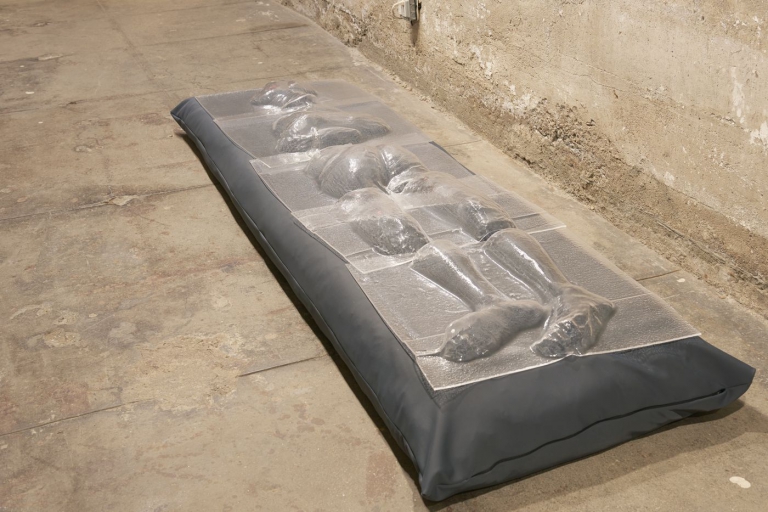Artist: Jacky Connolly
Exhibition title: Ariadne
Venue: Tara Downs, New York, US
Date: June 19 – August 2, 2019
Photography: all images copyright and courtesy of the artist and Tara Downs, New York
rosebud;!;!;!;!;!;!;!;!;!
This Sims money cheat code is forever imprinted onto my brain, much like the other things I learned as a preteen, which vary wildly in their usefulness: introductory French, fully memorized episodes of “Drake & Josh,” plus a handful of treacherous moments I’d love to forget. Jacky Connolly’s moving image works, made with a video game rather than 3D animation software, speak to the impressionable adolescent mind, focusing on the young suburban woman—her absorption of trauma, her adaptability in learning new technologies, her desire to build worlds. Though conversations touch often on the threat of desensitization via mass media, less often do we speak of their capacity to retraumatize through rehearsal and reenactment; Connolly turns astutely to trauma’s effects rather than its events in her latest film Ariadne (2019), premiering at Downs & Ross.
The fifty-minute piece is set amidst a lightning storm that splices together two realities: a virtual, seaside Italian villa created in Sims, and New York City, shot with a camera. The rupture forms a third suburban, autumnal realm. Ariadne1, of New York and played by the artist, decides she wants to disappear, allowing lightning to transport her into a virtual realm. The simulated Ariadne2 is seen with a red lightning scar upon her chest—a trace of the act, which she carries with her back into the live-action scene that concludes the film.
Disappeared girls are the engine of so many stories, from Greek mythology to “Twin Peaks.” In fact, Ariadne takes her name from a Cretan princess—by some myths, mortal; others, goddess. One story goes that her lover, Theseus, carried her to Naxos and left her to die, where she was then rescued by and married to Dionysus. Others believe she committed suicide. Rarely in such narratives is it assumed that the missing girls might want to disappear, or that they control their fates; their stories are told from the vantage of the men who project onto her, who fantasize about girls’ desubjectivized bodies. It’s no wonder Ariadne1 would want to escape such a world.
Trauma’s aftermath is conveyed neither through SIM-gibberish dialogue, nor by limited body language and facial expressions. Instead, Connolly borrows formal conventions from narrative cinema. There’s a haunting soundtrack, scored by Hunter Hunt-Hendrix; a Lynchian, empty, eerily-lit diner among other suburban interiors; the ‘camera’s’ fascination with solo, silent women à la Todd Haynes’ Safe; and implied family disfunction frequently found in melodrama (weepies, ‘women’s pictures). Connolly leaves clues toward her referents: Doug Richmond’s 1985 book How to Disappear Completely and Never Be Found, for instance, is stationed throughout. Due largely to the nature of the game, there are no close-ups, their absence serving to emphasize the characters’ solitude, their displacement in empty sets. In this distancing emptiness, amidst the haunting glows of domestic lamps, reminiscences of Edward Hopper’s paintings prove inevitable. The women seem too depressed to act, and when they do, it’s often to look at a screen or stew in a bathtub.
Sims has been a rare place for young girls to build and control their own worlds. It’s an offline computer game focused on world-building and free from others, while film production typically necessitates a crew. When Connolly was younger, Sims was an escape to an imagined world of her freedom, but now, as the artist puts it, she is “no longer enacting an imagined future, but reenacting the traumas of earlier life stages.” Connolly’s world-building is incredibly intricate, with custom objects like autumn leaf print leggings and angel-winged mirrors. A reveal at the end shows how her meticulously mysterious apartment building weaves together various women through screen and architectural space. Her interior world is projected off-screen through a series of hand-painted, stained-glass lamps—their images sourced from the video are imported onto a standard template, a process that resembles the Sims building process and recalls the screen space via illuminated, rectangular images. Though physical objects grounded by hand- forged steel bases in the offscreen world, they nonetheless center around images as a site for fantasy. Many of their titles are drawn from poems by Georg Trakl, whose melancholic prose is a favorite of the artist and Martin Heidegger alike; in the context of the show, they reveal the blurring between teen angst and esteemed existentialist thought, and remind me of how the tragic loss of naïve optimism undone in teenage years can never be restored.
In the same way that the artist straddles the high and the low in the form of esteemed existentialism and teen angst, Sims and stained glass, she also ferries between the narrative cinema of the black box and the video art of the white cube, presenting us with work equally at home in either setting, as well as on a laptop in bed. Connolly provides a way forward from the strange perversion that accompanies watching Kubrick on our smartphones and YouTube on our plasma screens, asking us to consider which mediums and messengers are dismissed as mere “play.” Where her art assimilates a porousness to drifts in meaning one finds in games, she posits the young girl as both subject and author throughout
– one as knowing as any traditional cinema auteur.
– Emily Watlington
Jacky Connolly was born in 1990 in Lower Hudson Valley, New York. She gained her BFA in Photography, Art History, and Critical Studies from Bard College at Simon’s Rock in 2011; she gained an MFA in Digital Arts and MSc in Library and Information Science from Pratt Institute in 2016. Selected solo & two-person exhibitions and screenings: Downs & Ross, New York; Atlanta Contemporary, Atlanta; Microscope Gallery, Brooklyn; Peach, Rotterdam; Daata Editions at NADA New York; Kimberly-Klark, Queens; Bus Projects, Melbourne; and Et al., San Francisco. Selected group exhibitions and screening programs: Museum Brandhorst, Munich; The Whitney Museum of American Art, New York; D21, Leipzig; IULM, Milan; PAF Animation Festival, Olomouc, CZ; Ellis King, Dublin; Kimberly-Klark at Interstate Projects, Brooklyn; Et al., San Francisco; and Hester, New York. She lives and works in Bearsville, NY.
The artist would like to thank Durand Van Doren, Dustin Synnestvedt and Kara Cowley at Woodstock Stained Glass, and Shelby Jackson. Special thanks to Hunter Hunt-Hendrix for his musical and structural contributions to the film. Hunt-Hendrix (b. 1985, lives and works in New York) is a composer of the ongoing metaphysical operatic cycle OIOION and founder of the American black metal band Liturgy.
Strobe warning: the video contains three scenes with intermittent strikes of lightning resulting in brief strobe effects.
Jacky Connolly, Ariadne, 2019 (trailer), HD video, color, sound, 50m 13s
Exhibition view of Jacky Connolly: Ariadne, 2019, Downs & Ross, New York
Jacky Connolly, Something Strange is a Soul on the Earth, 2019, Hand-painted stained glass, hand-forged steel, cast brass, 30 × 14 1/4 × 14 1/4 inches / 76.2 × 36.2 × 36.2 cm
Jacky Connolly, Something Strange is a Soul on the Earth, 2019 (alternate view), Hand-painted stained glass, hand-forged steel, cast brass, 30 × 14 1/4 × 14 1/4 inches / 76.2 × 36.2 × 36.2 cm
Exhibition view of Jacky Connolly: Ariadne, 2019, Downs & Ross, New York
Jacky Connolly, The Lightning Flower, 2019, Hand-painted stained glass, hand-forged steel, cast brass, 28 × 14 × 14 inches / 71.1 × 35.5 × 35.5 cm
Jacky Connolly, The Lightning Flower, 2019 (alternate view), Hand-painted stained glass, hand-forged steel, cast brass, 28 × 14 × 14 inches / 71.1 × 35.5 × 35.5 cm
Exhibition view of Jacky Connolly: Ariadne, 2019, Downs & Ross, New York
Jacky Connolly, Our Lady of the Highways, 2019, Hand-painted stained glass, hand-forged steel, cast brass, 31 1/4 × 14 × 14 inches / 79.4 × 35.5 × 35.5 cm
Jacky Connolly, Our Lady of the Highways, 2019, Hand-painted stained glass, hand-forged steel, cast brass, 31 1/4 × 14 × 14 inches / 79.4 × 35.5 × 35.5 cm
Jacky Connolly, How to Disappear (Autumn in Lonely Rooms), 2019, Hand-painted stained glass, hand-forged steel, cast brass, 26 3/4 × 14 1/4 × 14 1/4 inches / 67.9 × 36.2 × 36.2 cm
Jacky Connolly, How to Disappear (Autumn in Lonely Rooms), 2019, Hand-painted stained glass, hand-forged steel, cast brass, 26 3/4 × 14 1/4 × 14 1/4 inches / 67.9 × 36.2 × 36.2 cm
Exhibition view of Jacky Connolly: Ariadne, 2019, Downs & Ross, New York
Exhibition view of Jacky Connolly: Ariadne, 2019, Downs & Ross, New York
Jacky Connolly, Ariadne, 2019 (still), HD video, color, sound, 50m 13s




















